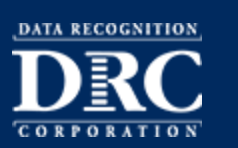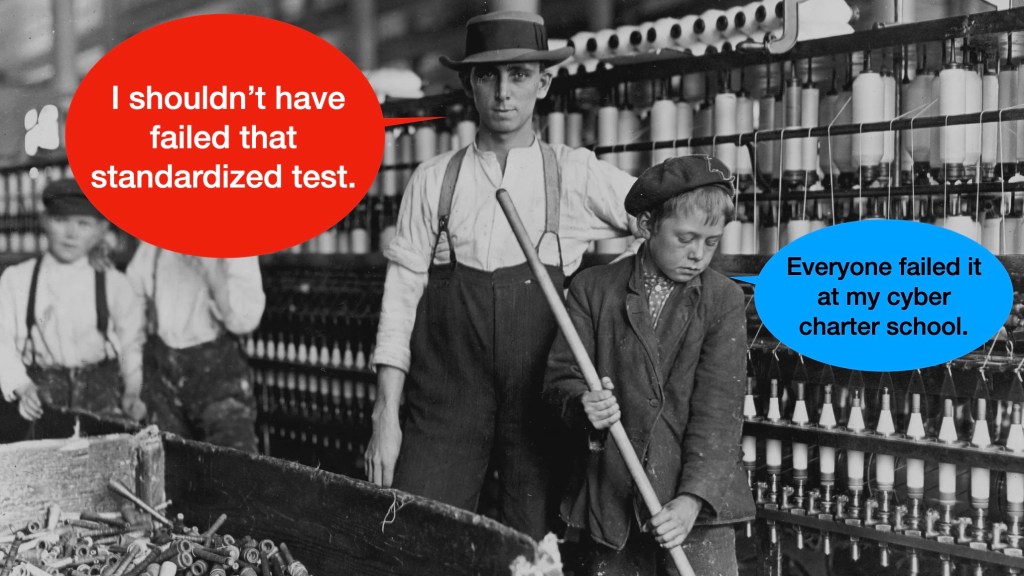
A multi-million dollar corporation wants to make sure Pennsylvania’s children keep getting standardized tests.
Data Recognition Corporation (DRC) and the state Department of Education are providing the optional Classroom Diagnostic Tools (CDT) assessments for use in students’ homes.
Students are not required to take the CDT in the Commonwealth unless their district decides to give it. The test is encouraged by the state as a way of telling how students will do on the required tests.
With this new option, parents finally can give multiple choice standardized tests to their own children on-line.
Which is kind of hilarious because no one really asked for that.
In fact, many parents, teachers and students breathed a sigh of relief when the requirement that students take high stakes assessments was waived this year nationwide.
With the Coronavirus pandemic closing most school buildings and students transitioning to on-line classes created from scratch by their teachers, there hasn’t been much time for anything else.
But the folks at DRC, a division of CTB McGraw-Hill, have been busy, too.
The Minnesota-based corporation sent out an email written by Matthew Stem, Deputy Secretary of Elementary and Secondary Education at the Pennsylvania Department of Education (PDE) to district contacts from Pittsburgh to Philadelphia encouraging the use of this newly available online CDT.
“I am pleased to announce that PDE is providing the Classroom Diagnostic Tools (CDT) as an optional additional resource for your Continuity of Education Plan,” Stem began.
“We anticipate that this option will be available through the reopening of schools in 2020.”
So if school boards and administrators choose, districts could assign the CDT at the end of this school year, during the summer or at the start of next school year even if school buildings are not yet open due to lingering pandemic problems.
This is the kind of academic continuity we should be rethinking not finding new ways to force on children.
For some state officials and testing executives perhaps it’s comforting that no matter what happens in this crazy world, at least we’ll still be able to sort and rank kids into Below Basic, Basic, Proficient or Advanced.
The rest of us would prefer more authentic education and assessment.
EVERYDAY USAGE
It should be noted that the CDT is not, in itself, a high stakes test.
It’s an optional test districts can assign to students in reading, math and science to predict how well they’ll do on the actual high stakes tests.
Normally, districts are encouraged (but not required) to give the CDT to students multiple times a year to determine where they’ll struggle on DRC’s other fine products like the Pennsylvania System of School Assessment (PSSA) tests given to children in grades 3-8 and the Keystone Exams given to high schoolers.
Of course this data is often used to determine which classes students are placed in, so it can play a huge role in deciding which resources and opportunities kids have.
A child who scores well can get in the advanced courses and gain access to all the field trips, guest speakers, pizza parties and other perks. Kids who score badly are often placed in remedial courses where they forgo all the glitz for extra test prep and the abiding label that they’re inferior to their classmates in the higher academic tracks.
However, you don’t really need the CDT to make such placements. Just put all the kids from wealthier families in the higher courses and kids living in poverty in the lower courses and you’ll have pretty much the same distribution.
Because standardized testing doesn’t really measure academics. It appraises socio-economics. And race. Let’s not forget race!
The Coronavirus pandemic actually leveled the playing field for the first time in nearly a century. Everyone – rich and poor – had their education disrupted.
But at least now with the reintroduction of the CDT, we can continue to discriminate against the poor black kids while privileging the richer whiter ones.
In some ways, that’s just the everyday injustice of American school policy.
However, the method DRC and PDE are using to clear the way for this particular scheme is truly spectacular.
A DISASTER WAITING TO HAPPEN
They’re enlisting parents as test proctors.
Normally, as a classroom teacher when my administrator demands I give the CDT to my students, I have to block out a few days and give the tests, myself.
I have to pass out entry tickets with each student’s username and password so they can login to the DRC app on their iPads and take the test.
If there’s a problem signing in, I have to try and fix it.
If kids are kicked out of the testing program and can’t sign back in, I have to deal with it.
If there’s a problem with the Internet connection…. I think you get the idea.
And all of these problems are extremely common.
In the last five years of giving the CDT, I have never had a single day go by when I didn’t experience multiple technological snafus, disruptions or downright clusters.
And that’s not to say anything of the times students read a question, don’t understand what it’s asking, wave me over and I’m just as dumbfounded as they are.
In fact, the only positive I can imagine from such a situation is that parents will finally get to see how badly written and full of errors these tests truly are. Even the guidance materials are full of misspellings and confusing verbiage.
When presented with this nonsense, many kids simply zone out, clicking random answers so they can be done as soon as possible and then put their heads down for the remainder of the time.
This is the lions den the state wants to throw parents into.
PARENTS AS CORPORATE DEFENSE
Admittedly, parents won’t have a full class of 20-30 students to deal with, but complications are guaranteed.
However, the good folks at DRC are prepared for that.
They have a handy “Parent/Guardian Test Administration Guide.”
Here’s what it has to say on ASSESSMENT SECURITY:
“Parents/Guardians should remind their student that the CDT test content must remain secure at all times. None of the materials from the online test may be copied or recorded in any manner.”
That’s quite a step down from what the same company warns students on the PSSA:
“…Copying of material in any manner, including the taking of a photograph, is a violation of the federal Copyright Act. Penalties for violations of the Copyright Act may include the cost of replacing the compromised test item(s) or a fine of no less than $750 up to $30,000 for a single violation. 17 U.S.C. $ 101 et seq”
I guess that since the CDT questions are just the ones that prepare you for the REAL test questions, it doesn’t matter as much if their security is put at risk here. Or perhaps the risk of letting kids go without testing and having people realize how unnecessary these tests are is greater than any loss in test security or accuracy.
TECHNICAL ISSUES EXPECTED
The guide also cautions that the test only may be taken using a Google Chrome Internet browser. If students don’t have one installed, there is a link for parents to follow so they can install it for their kids.
For some parents, I’m sure this would be no problem. But many of my students’ parents have little access or knowledge of technology. They would pull out their hair at the very suggestion and come running to teachers and administrators for help.
Which is exactly what DRC suggests they do.
Here’s what the guide recommends for technical support:
“If technical issues arise during testing, parents/guardians are asked to contact the student’s teacher and/or the student’s school office for technical support. DRC customer service staff cannot directly support issues related to each home’s technology configurations.” [Emphasis mine.]
And this is true even if the test, itself, directs parents to contact the corporation:
“If a student receives an error message during the test administration that includes instructions to contact DRC for technical support, the parent or guardian who is assisting with the test administration should contact the student’s teacher or school office for additional instructions. Parents or students should not attempt to contact DRC’s customer service directly for technical assistance.
Teachers and/or a school’s technology staff will have the information needed to provide parents/guardians with the level of support to resolve most technology issues. If additional support is required, a school or district representative will reach out to DRC to determine a resolution.”
This is certain to put quite a strain on districts since these technological problems will occur not as they normally do within school buildings but potentially miles away in students’ homes.
Moreover, one of the most common glitches with the CDT often occurs with the entry tickets. These are typically printed by administrators and distributed to teachers who give them to students on test day. Students use the logins and passwords to gain access to the tests.
Stem’s plan would have these tickets distributed digitally over Google Classroom or whatever file sharing service is being utilized.
So this requires yet another level of distance and technological competency from parents and students just to access the tests. And once that access is gained, these logins need to be readily available in the highly likely event that students get booted from the program and have to reenter this data.
I’m sure there will be noooooooo problems at all with this. It will run very smoothly.
PARENTS AS PRISON GUARDS
But let’s say parents are able to help their children login to the test and no technical problems arise.
Can parents let their kids simply take the test alone up in their rooms?
No.
As a test proctor, you are expected to watch your children every second they’re testing to ensure they aren’t copying any information or cheating.
You can let your child have scratch paper, highlighters and calculators. But no preprinted graphic organizers, cell phones, dictionaries, thesauri, grammar or spell checkers, other computers or devices.
One concession DRC makes is that parents are encouraged to give the shorter Diagnostic Category CDT and not the full version. I’m sure distinguishing between the two on your child’s screen will be no problem at all.
This would reduce the test to 35-45 minutes – about half of the full CDT. However, times may vary – my own students have taken more than 180 minutes sometimes to finish the full version.
Still, none of this comes close to my favorite part of this catastrophe in waiting.
If parents still are uncertain about how to do all this, there is a link to a series of training videos on the PDE Website.
These are pretty much the same videos teachers are required to watch every year before giving the CDTs.
As you can imagine, they are perhaps our favorite moments of the year. We sometimes watch them over and over again. Not because they’re so riveting but because we’re required to before we give these infernal tests!
Oh, parents, you are in for a treat if your district decides to take advantage of this wonderful opportunity!
AN IMPOSITION ON PARENT’S TIME
Speaking of which, I wonder when Stem thinks parents will have the time to do all this.
Parents are working hard just to make ends meet. They’re trying to earn enough money to support the household, cook dinner, clean house, do laundry, and a host of other things.
Teaching is a full-time job and most parents don’t have the privilege to set aside that kind of time nor are they disposed to do this stuff in the first place.
When I teach my students over ZOOM, I rarely see parents guiding their kids through the lessons.
If a kid falls asleep, it’s up to me to somehow prod him awake over the Internet. If a child isn’t paying attention or playing on her phone, it’s up to me to direct her back on task.
In class, that’s fine. It’s my job and I’m right there in front of the child.
On-line, I cannot do it nearly as effectively. But I do my best because I can’t realistically expect all parents to step in here.
Yet DRC is expecting parents to do just that by becoming test proctors.
CONCLUSIONS
This is a terrible idea.
It will lead to fabulous disasters where teachers, administrators and parents fumble to make things work as DRC pockets our tax dollars.
Over the past decade, Pennsylvania and local school districts paid more than $1.3 billion for standardized testing. In particular, the state paid DRC more than $741 million for the PSSAs, Keystone Exams and CDT tests. Two of three DRC contracts were given sole source no-bid extensions.
Imagine what cash-strapped districts could do with that money.
Yet Stem, a former assistant superintendent in Berks County and former administrator in Lancaster, thinks we should give this money to corporations and then break our own backs meeting their needs.
Even if we could give the CDTs seamlessly online at home, it would hurt our most underprivileged children by taking away opportunities and unjustly labeling them failures.
No, if you ask me,it is not time to try to save standardized testing with a tone deaf plan to enlist parents as test proctors while kids are chained to the Internet.
It’s well past time to rethink the value of these tests in the first place.
We don’t need them.
Teachers can assess learning without the help of corporate America.
Our kids and their families deserve better than this.
Contact your local school directors and demand they NOT give the CDT – not now, not during the Coronavirus pandemic, not when the crisis is over, not ever again.
And if they won’t listen, opt your children out of standardized testing including diagnostics like the CDT. Then run for school board, yourself, with other likeminded parents and community members.
Write letters to the editor of your local paper, make some noise.
The people still hold the power. And we’re all being tested in more ways than one.
The following communication was initially broadcast by the Pennsylvania Department of Education on May 18, 2020. DRC is forwarding the same message to the district and school contacts on file in our databases.

May 18, 2020
To: Superintendents, Principals, Charter School CEOs, and IU Directors
From: Matt Stem, Deputy Secretary
Subject: Availability of the Classroom Diagnostic Tools (CDT) for use by students at home
I am pleased to announce that PDE is providing the Classroom Diagnostic Tools (CDT) as an optional additional resource for your Continuity of Education Plan. The CDT is a set of online tools designed to provide diagnostic information to guide instruction and provide support to students and teachers. It is aligned with the content assessed on the PSSA and Keystone exams. We anticipate that this option will be available through the reopening of schools in 2020.
This at-home testing option will allow students to access the CDT from a “public” browser without having it installed on their computers or being configured to their District’s Central Office Services network. The test-setup tasks that teachers/school assessment coordinators routinely complete for classroom administrations of the CDT are the same for the at-home administrations. Test tickets (login credentials) will be distributed directly to the students by school staff. Teachers will have access to all CDT data/reports from the at-home administrations as usual. An overview of the at-home testing option and a guidance document for parents/guardians can be accessed from the following links (or directly from DRC’s INSIGHT Portal under General Information >> Documents >> 2019-2020 Classroom Diagnostic Tools >> Memos/Documents).
At-Home Testing Overview: https://pa.drcedirect.com/Documents/Unsecure/Doc.aspx?id=32997b8e-13cf-42f0-9c2c-af1689d89323
Parent/Guardian Guidance: https://pa.drcedirect.com/Documents/Unsecure/Doc.aspx?id=cc242168-e06e-44d1-9fd4-ef859a519dab
All CDTs (Full and Diagnostic Category) are available for use. However, it is highly recommended to only have students take the Diagnostic Category CDTs at this time. Students and their parents/guardians may benefit from a much shorter testing experience using the Diagnostic Category CDTs that are aligned to current instructional content. The shorter, more focused testing will still provide teachers and administrators with the same level of reporting and resources to adjust instruction and planning during distance learning.
Thank you for all your efforts to support students during this challenging time. If you have any questions, comments, or concerns, please contact the curriculum coordinator or CDT point of contact at your local Intermediate Unit. If you are interested in using CDT for the first time, contact PDE here.
Sincerely,
Matthew Stem
Deputy Secretary, Office of Elementary and Secondary Education
Pennsylvania Department of Education

Like this post? You might want to consider becoming a Patreon subscriber. This helps me continue to keep the blog going and get on with this difficult and challenging work.
Plus you get subscriber only extras!
Just CLICK HERE.

I’ve also written a book, “Gadfly on the Wall: A Public School Teacher Speaks Out on Racism and Reform,” now available from Garn Press. Ten percent of the proceeds go to the Badass Teachers Association. Check it out!























